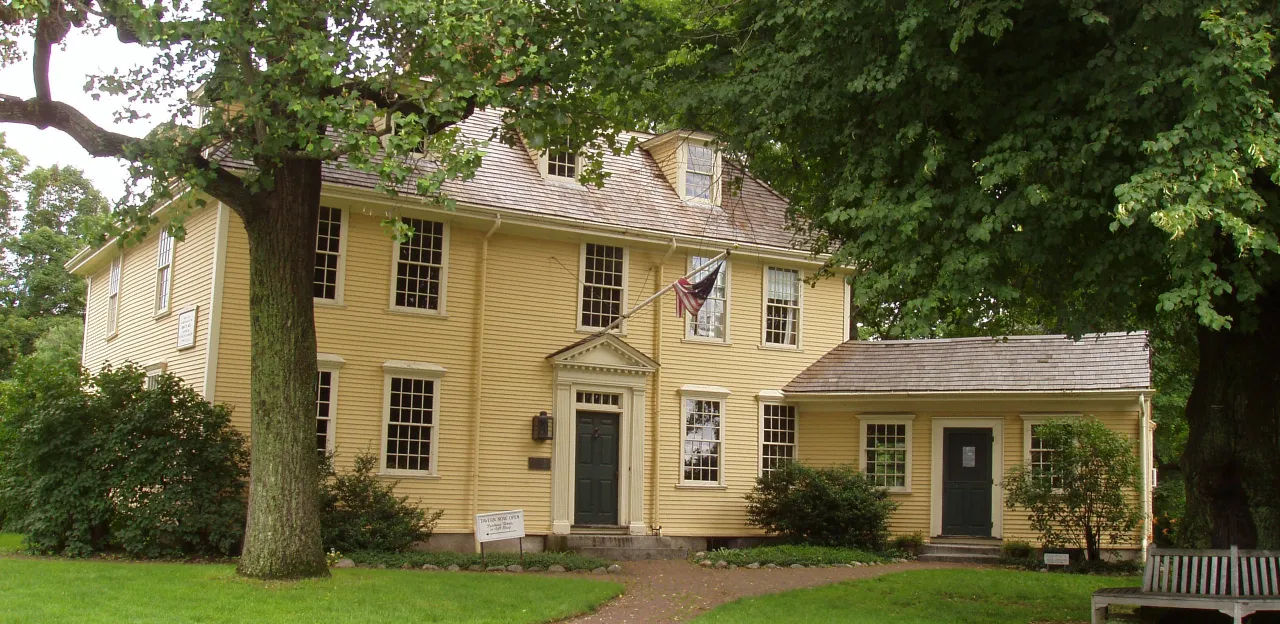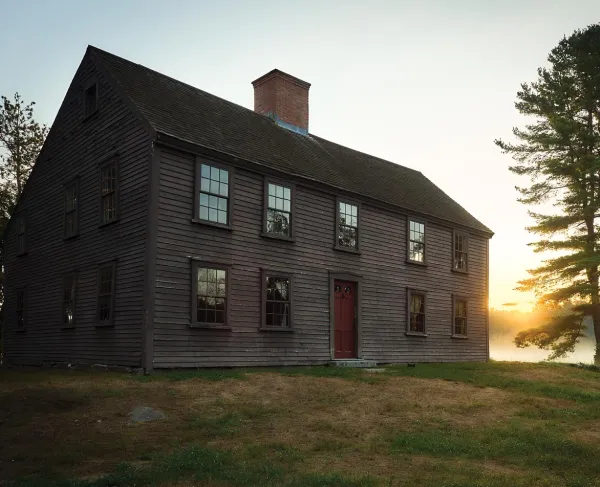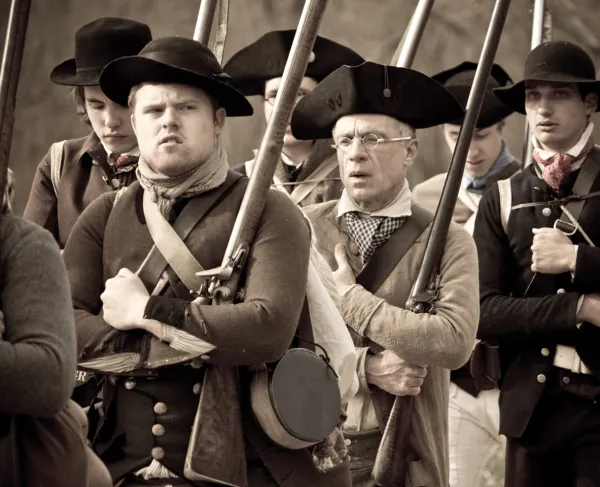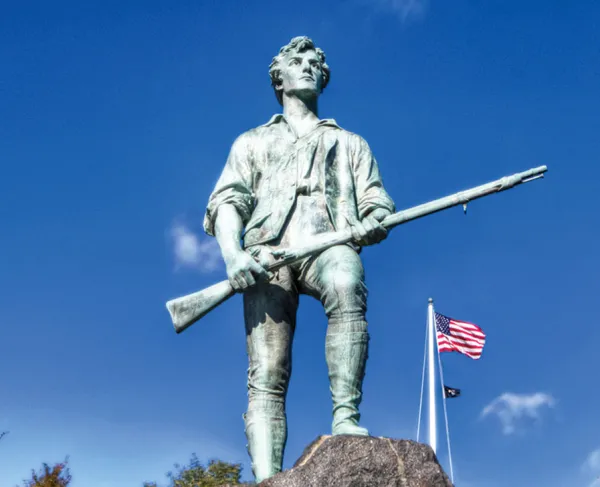Buckman Tavern
One of the most recognizable structures on the Lexington Battle Green (or Lexington Common) is the historic Buckman Tavern. When the world changing events occurred here on April 19, 1775, the tavern was already sixty years old. A central gathering place for locals and travelers, Buckman Tavern was a social and commercial center for the town and village of Lexington.
Built in 1710, the tavern was one of the first of its kind in Lexington. Originally operated by Benjamin Muzzey, Buckman Tavern was located near the intersection of the Boston-Concord Road and the road to Bedford. Like other taverns, the building served as a local eatery, overnight space for travelers, and a gathering place for official and unofficial local meetings. Taverns of the 18th century served as social and political centers of the community. Here, residents would meet to engage in debate, share information and also hear news from those traveling through town and staying at the tavern.
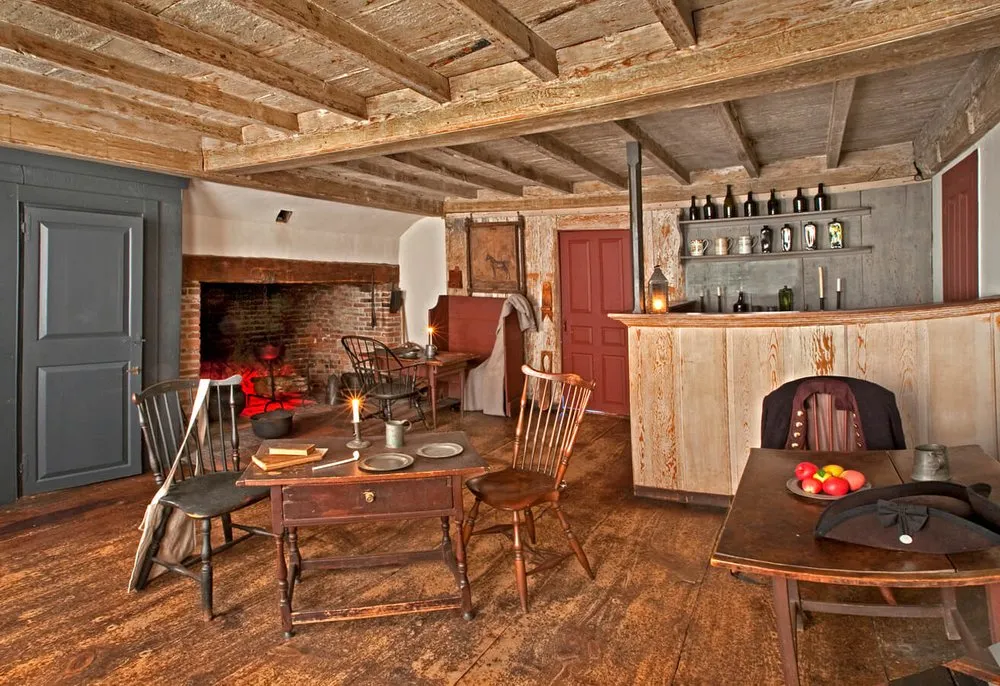
In 1775, the tavern was operated by John Buckman (who married into the Muzzey family). The Buckmans were politically labeled as Whigs (favorable to colonial resistance to British policies) and like many of the men in Lexington, John was part of the Lexington Training Band (local militia unit). Many of the civic and religious leaders in Lexington were outraged by the British response to the Boston Tea Party in the passing of the Coercive Acts, which served as a motivator for men to join their local militias. John Buckman agreed and took an active role in supporting the Whig cause.
What drew the world’s attention to Lexington and Buckman Tavern? Its location on the Boston and Concord Road. Concord was considered by British leaders in Boston as the hotbed of the Whig resistance to British political and military authority. On April 18, 1775, British Regulars began an expedition out of Boston to Concord to capture or destroy military stores believed hidden in town and outlying farms. Whig leaders, John Hancock and Samuel Adams, were staying that night in Lexington, only a few feet from the Buckman Tavern at the Hancock-Clarke House. That night Paul Revere road into town to spread the alarm that British Regulars were on the move. Many believed that Hancock and Adams were British targets (though this has never been proven). The Lexington militia was soon called out and met on the Lexington Common led by Captain John Parker.
With dozens of armed militia on the Common, Parker waited the arrival of the British column. But after several hours the British failed to arrive. Parker ordered the militia to disperse but to be ready to return if called upon. Many decided the best place to wait out the evening was at Buckman Tavern. Though it was early morning, John Buckman opened up the tap room and many of the militia passed the time with drinks and conversation. At about 4:30 a.m. a rider appeared and said the British Regulars were just down the road. The men poured out of the tavern and back onto the Common. At about 5 a.m. seventy-seven Lexington militia faced off with several hundred British Regulars.
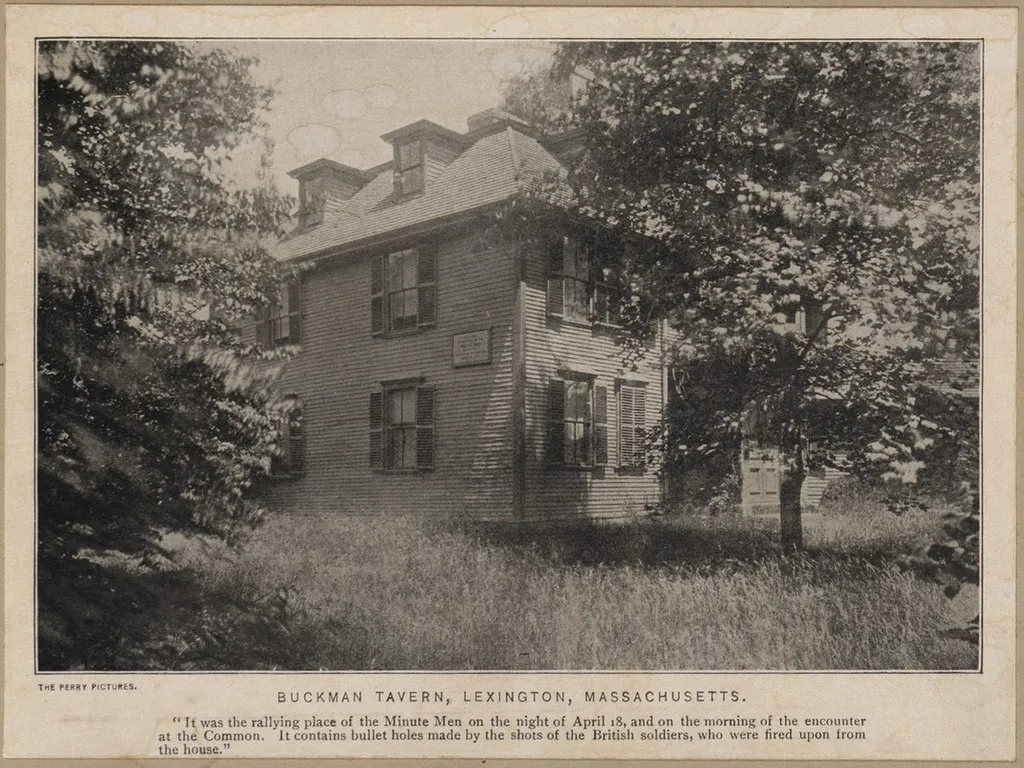
No one knows for sure who fired the first shot, some believe it was someone off the Common near Buckman Tavern. But soon after the first shot rang out, the British Regulars lowered their muskets and poured a volley into the Lexington militia. After a brief one-sided affair, eight militia were killed and ten were wounded. Only one British Regular was wounded. The American Revolution had begun.
After the war, the tavern continued to operate and went through various uses until the town of Lexington took ownership of the structure in the 1910’s. The town leased the structure to the Lexington Historical Society, and soon they opened the building as a museum. Today the furnished spaces inside reflect the building’s history in 1775, but upstairs modern rotating exhibits tell other stories of the tavern, Lexington, and American history. Tours are offered year-round on a varying schedule.
Related Battles
93
300

